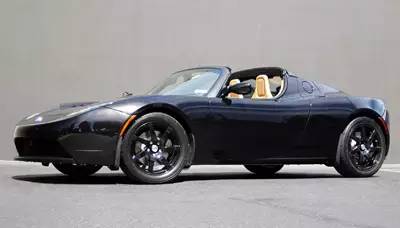On the afternoon of May 31, Tesla held its annual shareholder meeting in Mountain View, California, which lasted for more than 3.5 hours. During the meeting, Musk confessed his past mistakes and expressed gratitude to the partners and employees who have helped Tesla grow over the past 13 years. Additionally, he also announced some of Tesla’s future plans.
Confessing Mistakes
The first Roadster was “completely unsafe”
Regarding the first Roadster, Musk said during the meeting, “Although it passed all regulatory requirements, this car was completely unsafe.”
The reason for this was that it adhered to a wrong principle: the Roadster could be built around AC Propulsion’s core technology. AC Propulsion is a start-up based in Southern California that manufactures drive systems for an electric sports car called the Tzero.
Musk said that AC Propulsion’s technology was difficult to replicate and commercialize:
- AC Propulsion’s information system is analog, not digital, so engineers had to rewrite all the code involved.
- AC Propulsion’s battery pack is cooled by air, and when the battery supplies power to the electric car and heats up, it cannot provide sufficient cooling capacity; later, Tesla changed the Roadster’s battery pack to liquid cooling.
In addition, when trying to make AC Propulsion’s technology and the British sports car Lotus compatible, significant problems arose:
- Using AC Propulsion’s battery pack was too large for the Lotus body, so Tesla had to make the body longer.
- Lotus cars could not use an air conditioning system because it relied on internal combustion engine power, so Tesla had to redesign the air conditioning system.
- Changing Lotus’s internal combustion engine power to battery power meant that all previously completed crash tests and safety standards were invalidated and had to be restarted.
- Ultimately, Tesla used only 6-7% of AC Propulsion’s original technology, which meant that it needed a completely new suspension system and brake technology.Have you seen it? Tesla integrated the technology of AC Propulsion and Lotus body, which is like integrating two small houses that have been built into a large house with a new design blueprint. This is much more difficult than building a new house.
The problems with the Roadster include low production efficiency and the need to replace many parts suppliers.
However, despite these issues with the first Roadster, Google co-founders Larry Page and Sergey Brin still gave money to Tesla after test driving an early Roadster for less than 16.1 kilometers.
Even Musk exclaimed, “They are too kind.” But everyone knows that they wouldn’t be kind for no reason. By the end of 2009, the Roadster finally lived up to its expectations and had a gross profit.
Musk said that the reason he made these early mistakes public was to let entrepreneurs know that it is okay to make mistakes when building something new, and that it is possible to establish a company in an area where they have no experience. You can understand this as outstanding people always like to encourage each other, or understand that he is creating a topic for the launch of the new Roadster.
Future
Tesla Model 3 owners may need to pay to use Superchargers
So far, Tesla electric car owners have been able to enjoy unlimited and free lifelong use of Tesla’s Supercharger stations for free. However, in the future, Tesla may charge Model 3 owners for the use of Superchargers.
Musk said, “We hope to provide users with more convenient and direct services, but offering free charging service for Tesla car owners for life is obviously a huge expense. I don’t want to create a big news story, but the most direct way is to remove this cost from the Model 3. However, charging a Tesla after long-distance travel is still very cheap compared to gasoline. Unless Model 3 users purchase our additional packages, they will not be able to enjoy the lifelong free charging service.” He also said, “We have no choice but to do this to avoid losses.”
Sensitive as you are, you may have noticed a problem with the following statement: Why precisely reduce costs on the Model 3? In April this year, Tesla released a lower-end Model 3 for $35,000. Affordable pricing prompted 400,000 pre-orders, with clients having paid a $1,000 deposit. With such high demand, electric charging stations would inevitably come under severe pressure. Therefore, the introduction of a paid-for mechanism is also believed to be a measure taken by Tesla to alleviate this pressure.
In summary, Xiaodian understands Tesla’s decision, as we never expected to use electricity for free. We hope that in the future, Tesla can bring the world more beautiful, functional and affordable electric cars!
At the meeting, Tesla also announced a series of future goals: to build the world’s largest battery factory and sell batteries to power buildings and energy networks. For Tesla, this is no big deal, right?
As long as the Model 3 can be produced smoothly.

You may be interested in:
- Five Critical Issues Affecting Tesla
- On the Eve of Mass Production of the Model 3, Senior Tesla Production Officials QuitInside Tesla Factory: Model 3 Exclusive HD Video
The Ambition of Tesla Model X Through Falcon Wing Doors
Partnered with Toutiao, Car Home, Yiche, and Zhihu.

This article is a translation by ChatGPT of a Chinese report from 42HOW. If you have any questions about it, please email bd@42how.com.
